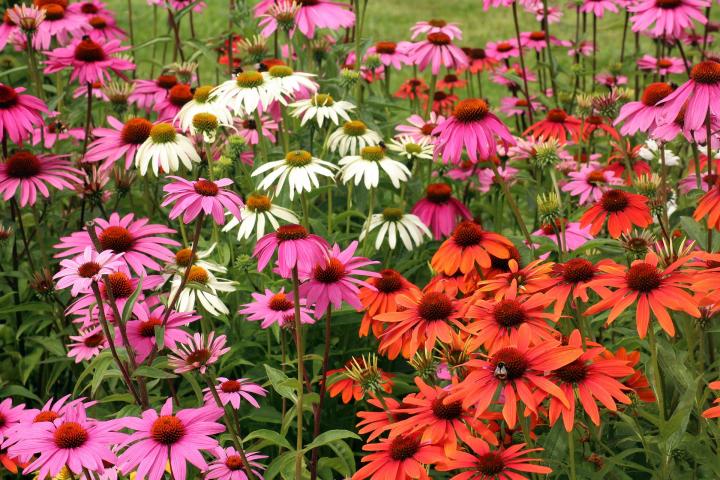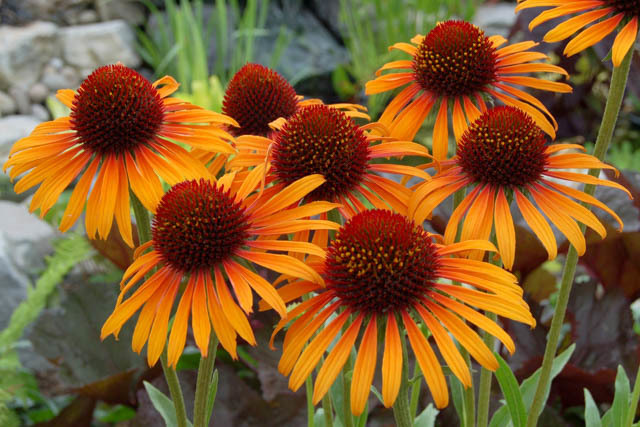Coneflowers are members of the daisy family. Coneflower is actually a nickname for the more formal Echinacea. These Echinacea are tough little flowers that draw butterflies, bees and birds to gardens!
This bloom is native to America, specifically to the eastern United States. It grows to be between two to four feet high and have dark green leaves. The central disks of each flower head is cone-shaped and surrounded by a single ring of petals.
The genus name, Echinacea, is derived from Latin word for hedgehog! They got this name because of their prickly lower stems. This feature makes these flowers more deer-resistant than most other flowering plants.
The large centers of each flower head surrounded by skinny turned-away petals gives these blooms a natural cone shape. Hence the name.

Echinacea purpurea is the most common species available to gardeners and produces bright purple flowers. There are many other colors from bright to subdued, all the way from tangerine orange to gold. Purple is the original color of these flowers; their beauty and strength made growers want to create new colored varieties.
These blooms can also be bicolored as well. ‘Big Sky Summer Sky’ flowers are a bicolored variety that bleeds from rose to orange from center to petal tip. Another popular bicolored coneflower is the ‘Flame Thrower’ that goes from orange to gold.
It is believed that carrying one of these blooms with you will help keep your spirit strong through turbulent times and are also sometimes presented at spiritual offerings.
Coneflowers start blooming midsummer and continue producing flowers all the way up to the first frost for healthy plants. Once plants are well established these sun-loving drought-tolerant plants are ready to live through some serious heat!

These flowers prefer bright sun and well-drained soil for the fullest number of blooms and will reach up to 4 feet tall. While these flowers need sun, so do others in your garden so it is important to make sure they won’t be casting shade on other plants.
The best way to grow coneflowers outdoors from seeds is to start growing them indoors a month before the last frost date. Newly sprouted plants will typically not produce flowers for the first 2 or 3 years. Mature plants should be cut back in late winter or early spring. It is important not to prune plants before they produce flowers. While coneflowers will attract butterflies, bees, and birds while in bloom, leaving the seed heads after bloom will also attract songbirds.
Echinacea is a very common plant for herbalists and is used all over the world to treat a range of illnesses and conditions. This anti-allergenic plant is most commonly used to treat the flu or a cold but can also be used to treat sore throats, burns, measles, toothaches, arthritis, and many more! Native Americans first identified the useful versatility of these plants, using them as an all-purpose remedy.







Leave a comment